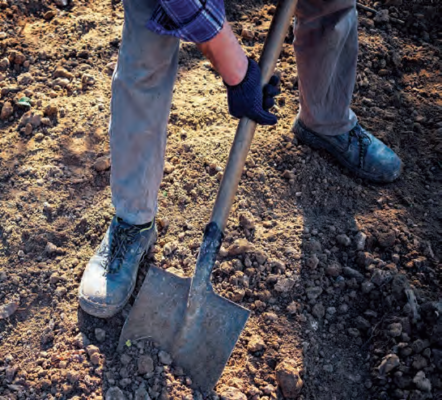Retired landscape horticulturist, Terry O’Regan, continues his series of articles reflecting on his adventures in the landscape sector
I cleared out the office belonging to our business enterprise last year. Emptying filing cabinets and storage boxes and trying to decide what must be destroyed or what could be recycled. It felt like I was speed-scanning the intestines of our erstwhile enterprise.
I asked myself again and again, “How did we manage it all?” When lumped together, the multitude of demands involved in operating our small landscape services operation seemed unsurmountable, and yet we survived. The answer to my question was double-barrelled. Each morning, there were clients waiting for work to be done and employees, vehicles and machinery waiting to go to work. So regardless of any crisis that may have landed on my desk, the show had to go on. Or to borrow from Samuel Beckett writing at the end of his novel The Unnameable, it was a case of “You must go on. I can’t go on. I’ll go on.” You do not really have a choice.
So, as you face the fallout of COVID 19, I am not trying to enrage you in suggesting that you too “must go on.” I will not tell you what to do. I will, however, tell you what I did when facing impending crises, when I may briefly have been frozen like a rabbit caught in headlights. I invariably shook myself like a wet dog and silently said, “I’ll go on!” Sometimes I went on alone, but more often it was a team response. None of my frozen moments could match the enormity of the COVID 19 tsunami, but a crisis is a crisis and crisis-management is the name of the game.
Everyone involved in horticulture digs holes. We know all about holes; we could sing about holes. That said, when you are in a hole there are times when you should stop digging and there are times when you need to dig faster.
Every few years when we hit contract commitment overload, around the end of April or early May, we’d be running around like headless chickens trying to finish up the planting jobs that had been held up by a wet March; trying to get on top of the first flush of grass growth on maintenance contracts and trying to make a start on the grassing jobs that we had blithely promised for April back in January. We were in a rapidly expanding hole and had to stop digging. I made a fresh list of what was feasible and began to call the clients whose jobs were getting deferred start dates. We may have lost a few contracts along the way, but we saved our sanity and probably our bank balance.
In contrast, in 2012, we faced the possibility of the collapse of our business as bad debts mounted up and both turnover and profit margins plummeted. We could not afford to stop digging as we had a substantial term loan with years to run, plus lease agreements and our own creditors, so, we dug faster. Along with running the business on a day-to-day basis, in our “free” time we worked out a three-year business plan with tentative candlelight at the end of a long tunnel. We prepared daily and monthly monitoring systems and pulled like dogs for five years until we exited the tunnel in 2018. That three-year plan was rewritten and revised many times over. There were still times when the ice underfoot was thin and cracking, but we dug our way through that hole.
The critical elements in that plan were tight cost-control, cash-flow management and early intervention. We kept to a comprehensive annual budget, a very detailed costing template, diligent recordkeeping, minimal personal drawings, daily monitoring/management of our bank balance and a monthly report on total outstanding debt.
But now it is you who must go on. You will devise a plan that works for you and hopefully, it will be with your current enterprise. But your three-year plan could also be about extricating yourself from one career path and embarking on another. To go on you must know how you got where you are, where you would like to be and what your options are; then decide your road-map for the next three years. A degree of luck will not go astray and I wish you same, but more importantly, you need hard facts, accurate figures, determination, realism and stamina.
They tell us this is the “new normal,” but we can only work with the proven tools and skills acquired in the “old normal.” ✽
  |








